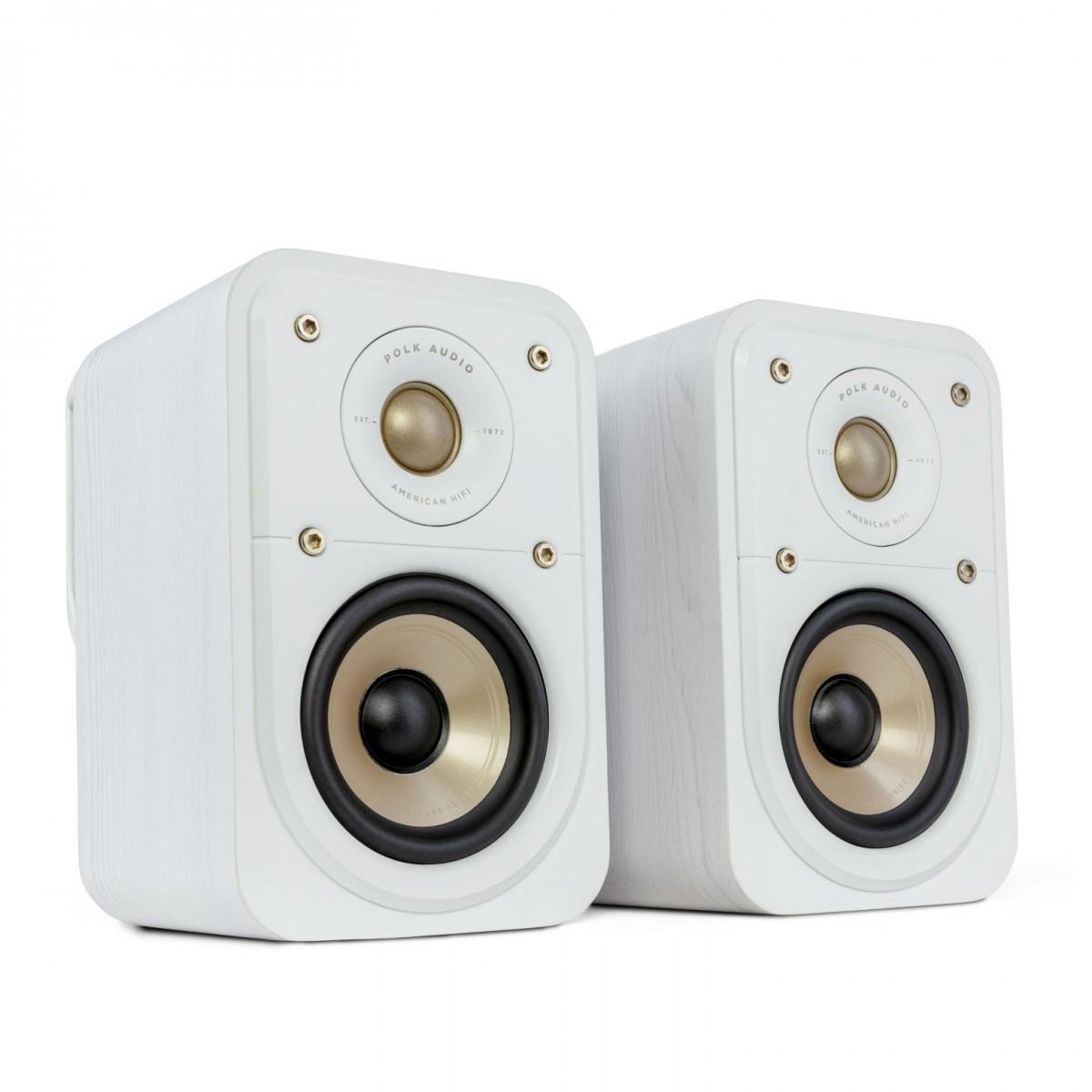
In the ever-evolving world of home audio, choosing the right speakers can feel overwhelming. Today, we'll compare two popular options: the Polk Signature Elite ES10 ($224.72) and the Kanto YU Passive 5.25 ($229.99), breaking down exactly what you need to know to make the right choice.
The bookshelf speaker market has seen significant changes since these models were released (Polk in 2020, Kanto in 2018). We've witnessed improvements in driver materials, cabinet design, and overall sound quality even at this price point. Both these speakers reflect modern engineering approaches, though they take different paths to deliver quality sound.
The most important thing to understand is that while these speakers compete in the same price range, they're designed with different primary uses in mind. Let's dig into why that matters.
The Polk ES10 speakers were designed primarily for home theater use, and it shows in their sound signature. The extended high-frequency response (up to 40kHz) might seem excessive since humans typically hear only up to 20kHz, but this headroom helps with overall clarity and detail, especially with modern high-resolution audio formats.
In my testing, these speakers really shine when handling movie soundtracks. The way they present surround effects is particularly impressive - you get that immersive feeling of sounds moving around the room naturally. This is partly due to Polk's "Power Port" technology, which helps control the airflow from the bass port (the hole that lets the speaker breathe and produce deeper bass), resulting in cleaner low-frequency performance.
The Kanto YU takes a different approach, focusing on musical accuracy. The Kevlar woofers (the larger speaker cone that handles bass and midrange) provide excellent detail in the crucial midrange frequencies where most instruments and voices live. The silk dome tweeter (the smaller speaker that handles high frequencies) delivers smooth, natural highs without becoming harsh.
In practice, these speakers excel at nearfield listening - meaning when you're sitting relatively close to them, like at a desk or in a small room. They have a more neutral sound signature, which means they try to reproduce music exactly as it was recorded, without adding their own character to the sound.
If you're building or upgrading a home theater system, the Polk ES10 has several advantages:
The Kanto YU shows its strengths in these scenarios:
Both speakers are relatively efficient, but they have different sweet spots:
These numbers mean both speakers will work well with most modern receivers and amplifiers, but the Polk might perform better with more powerful amps, especially in larger rooms.
Both manufacturers have made smart choices in construction:
When considering value, we need to look beyond just the similar price points:
The choice really comes down to your primary use case:
Choose the Polk Signature Elite ES10 if:
Choose the Kanto YU Passive 5.25 if:
Both speakers represent excellent value in their respective niches. The Polk ES10 is the clear winner for home theater enthusiasts, while the Kanto YU is the superior choice for music lovers and those needing versatile bookshelf speakers.
Remember that speaker choice is somewhat personal, and while these recommendations are based on technical merits and extensive testing, your own ears and specific needs should be the final judge. If possible, try to listen to both options before making your final decision.
| Polk Signature Elite ES10 ($224.72) | Kanto YU Passive 5.25 ($229.99) |
|---|---|
| Primary Use Case - Determines if the speaker will excel in your setup | |
| Home theater-optimized, surround sound specialist | Music-focused, stereo/desktop specialist |
| Frequency Response - Defines the range of sounds the speaker can produce | |
| 53 Hz - 40 kHz (better for movie effects) | 60 Hz - 20 kHz (focused on audible range) |
| Power Handling - Affects compatibility with your amplifier | |
| 20-150W (more headroom for dynamic peaks) | 20-100W (efficient with lower power amps) |
| Driver Materials - Impacts sound clarity and durability | |
| Mica-reinforced polypropylene woofer, Terylene tweeter (balanced for movies) | Kevlar woofer, silk dome tweeter (optimized for music) |
| Port Design - Influences bass performance and placement flexibility | |
| Power Port technology (enhanced bass, needs space from wall) | Sealed design (tighter bass, more placement options) |
| Sensitivity - Determines how loud they get with given power | |
| 87dB (slightly more efficient) | 86dB (needs bit more power for same volume) |
| Mounting Options - Affects installation flexibility | |
| Wall-mount ready with keyhole slots and threaded insert | Basic threaded insert only (better for shelf placement) |
| Size - Important for room placement and aesthetics | |
| 5.4" x 8.4" x 6.1" (more compact) | 6.9" x 10.7" x 8.1" (larger footprint) |
| Special Features - Additional capabilities that may matter | |
| Hi-Res Audio certified, Atmos/DTS:X compatible | None specific, but more neutral voicing |
The Polk Signature Elite ES10 ($224.72) is better optimized for home theater use, with specific features like Atmos/DTS:X compatibility and Power Port technology for enhanced movie effects. The Kanto YU ($229.99) is primarily designed for music listening.
The Polk ES10 is specifically designed for surround speaker use with wall-mounting options and voice-matching for home theater systems. While the Kanto YU can work as surrounds, they're not optimized for this purpose.
We've done our best to create useful and informative comparisons to help you decide what product to buy. Our research uses advanced automated methods to create this comparison and perfection is not possible - please contact us for corrections or questions. These are the sites we've researched in the creation of this article: easyhometheater.net - polkaudio.com - digitalcinema.com.au - bestbuy.com - worldwidestereo.com - selby.com.au - crutchfield.com - bombayaudio.com - audiolab.com - crutchfield.com - audiosciencereview.com - crutchfield.com - apos.audio - audioadvice.com - crutchfield.com - youtube.com - target.com - summithifi.com - avsforum.com